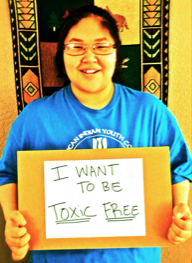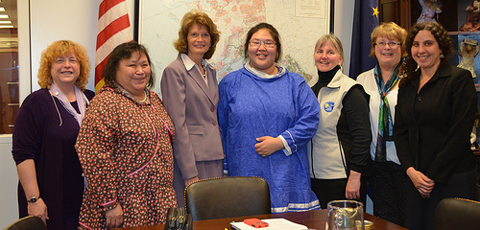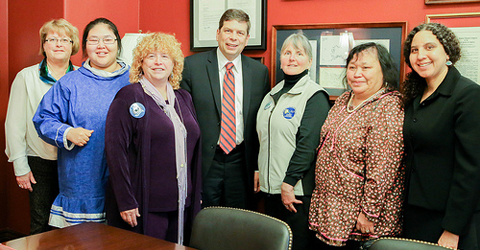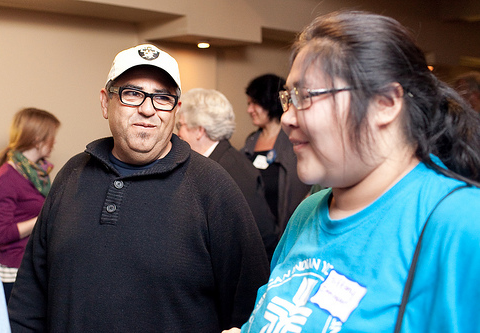Toxic chemical pollution has been an environmental health and justice issue in the U.S. for many decades. From Love Canal to the West Texas fertilizer plant explosion, we are reminded of the damaging health effects of toxic chemicals when disasters occur. But the troubling reality is that we are constantly being exposed to toxic chemicals in less dramatic ways every day. Many of these chemicals have been linked to cancer, birth defects, reproductive disorders, learning disabilities, and other health hazards. From baby shampoo to plastic water bottles, toxic chemicals are everywhere. Today, we know that chemicals used in everyday consumer products, such as plastic bottles can be highly toxic and bio-accumulate in our environment, our foods, and in our own human blood and breast milk. Even babies are born “pre-polluted,” carrying hundreds of cancer-causing chemicals in their little bodies. It is clear that the Toxic Substances Control Act of 1976 (TSCA), the law that regulates chemicals used in U.S. commerce, has failed to protect the public from harmful chemical exposures. But even with all this new information TSCA remains the only environmental law that has never been updated.
On the positive side, there is new momentum for reform of the outdated TSCA. Earlier this year, Senators Lautenberg (D-NJ) and Vitter (R-LA) introduced the Chemical Safety Improvement Act (CSIA-S. 1009), the first bi-partisan effort to update TSCA. The CSIA is a compromise bill, which the chemical industry loves. Those of us working with environmental health and justice issues do not support the bill in its current form. Parents and health professionals have also expressed serious concern with the proposed bill. The CSIA perpetuates the status quo of having a chemical law that fails to safeguard public health; for example it does not protect vulnerable populations such as children and pregnant women, nor does it protect “hotspot” communities –those communities that already suffer from disproportionate chemical exposures, including chemical workers and the people that live near chemical facilities. Moreover, the bill would actually eliminate one of the goods things that TSCA have allowed: the ability of the states to pass their own laws on toxic chemicals in order to protect the health of its citizenry.

On October 29, hundreds of people from across the U.S. joined in Washington, DC for a Stroller Brigade for Safer Chemicals. Mothers with their babies and children, health professionals, workers, representatives from environmental justice communities, including Alaska Natives, and even actress Jennifer Beals (remember the movie Flashdance?) voiced their united support for stronger and safer chemicals laws. I was fortunate to attend the Stroller Brigade with a group of women from Alaska.[1] We delivered to our Senators resolutions from the Alaska Federation of Natives and the Alaska Nurses Association in support of meaningful chemical policy reform. These resolutions ask for strengthening the CSIA to protect the public health of all vulnerable populations, including women, children and people from “hotspot” communities.
Before moving here, I shared the romantic vision that Alaska was a remote and pristine place. It was surprising to learn that Alaska–and the Arctic region–is actually the home of some of the most contaminated people on the planet. For instance, PBDE–-toxic flame retardant chemical–-concentrations in maternal blood serum of Yupik women within the Yukon-Kuskokwim Delta area of Alaska are the highest known in humans living in the Arctic as compared to levels elsewhere in the United States. People living in Saint Lawrence Island, Alaska have about ten times more PCB levels than people in the lower 48. These chemicals are not manufactured in Alaska; however, they arrive here through air and ocean currents and through traditional foods such as whales, seals, and walruses. All of this just adds to the legacy of toxic chemicals accumulating in Alaska as a result of industry and military practices. It turns out that the Arctic itself is a “hotspot” community as a result of the global transport of persistent contaminants.
The legacy of highly toxic chemicals in the Arctic is an important reminder that it is very hard-–if not impossible–to control where a toxic chemical goes once it enters into the commerce. However, we can control how to make safer products. We need a stronger TSCA that protects public health by protecting vulnerable populations. Moreover, we need a TSCA that expedites action on the worst chemicals and moves the market to safer alternatives. Lastly, we need a TSCA that allows the states to have authority to act in the absence of meaningful federal action to safeguard vulnerable populations. As we have learned from harmful exposure to tobacco or alcohol: prevention is always the best medicine.

Meeting with Senator Murkowski

Meeting with Senator Begich

Environmental Justice leaders: Tiffany (Alaska) and Jose (California)
Footnotes:
[1] The women in our group are:
- Charlotte Jane Kava, Community Health Researcher, Alaska Community Action on Toxics
- Tiffany Immingan, Youth from St. Lawrence Island, Alaska
- Susan Walsh, Representative and Past President, Alaska Nurses Association
- Patti Saunders, Advocate for Autism and Other Learning Disabilities Community
- Patrice Lee, Child Advocate and Fund Coordinator for Clean Air Fairbanks
- Maricarmen Cruz-Guilloty, Environmental Health and Justice Coordinator, Alaska Community Action on Toxics




